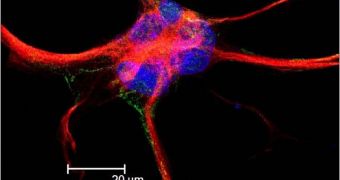Neurons, the famous nerve cells of the human brain, are the most widely-known variety of cells that exists in the cortex. However, they are not the only ones. An equally important role is being fulfilled by astroglia, which are the support cells on which neurons lie. According to a new investigation, it would appear that these particular structures can be turned into fully-functional neurons via a method developed by German researchers at the Helmholtz Center, and the Ludwig-Maximilians University.
The investigation, which was conducted in lab dishes, showed that astroglia can be turned into two distinct types of neurons that can then form connections with each other, and fire in concert. This is one of the most fundamental properties of nerve cells, as they must connect with each other via synapses in order to pass on electrical signals. When neurons fail, or begin to misfire, the result can be stroke, or the emergence of a neurodegenerative disease, such as Alzheimer's and Parkinson's. Injuries can also kill off neurons, and therefore researchers believe that using astroglia may also contribute to treating paralysis resulting from violent accidents.
In a paper appearing in this week's issue of the Public Library of Science's open-access scientific journal PLoS Biology, the investigators admit that a lot of research still needs to be done in this field, but say that, if the idea underlying the method is functional, then the field of medicine could be innovated extensively. Repairing the human brain and spinal cord after accidents or stroke is something that bioengineers and healthcare experts have been striving for for many years, Technology Review reports. But the good news doesn't stop here. Experts from the Helmholtz Center say that, with additional genetic tweaking, astroglia could in the future be turned into other types of neurons as well.
Benedickt Berninger, a coauthor of the PLoS study, says, “You could generate other types of neurons if you choose the appropriate factors.” One of the nerve cell types the researchers will probably try to obtain is the dopamine-releasing variety. Cells of this type are destroyed by Parkinson's disease, and they severely affect the patients' quality of life. Be developing methods of restoring their function, researchers could contribute to improving people's life, in addition to fighting the condition itself.

 14 DAY TRIAL //
14 DAY TRIAL //